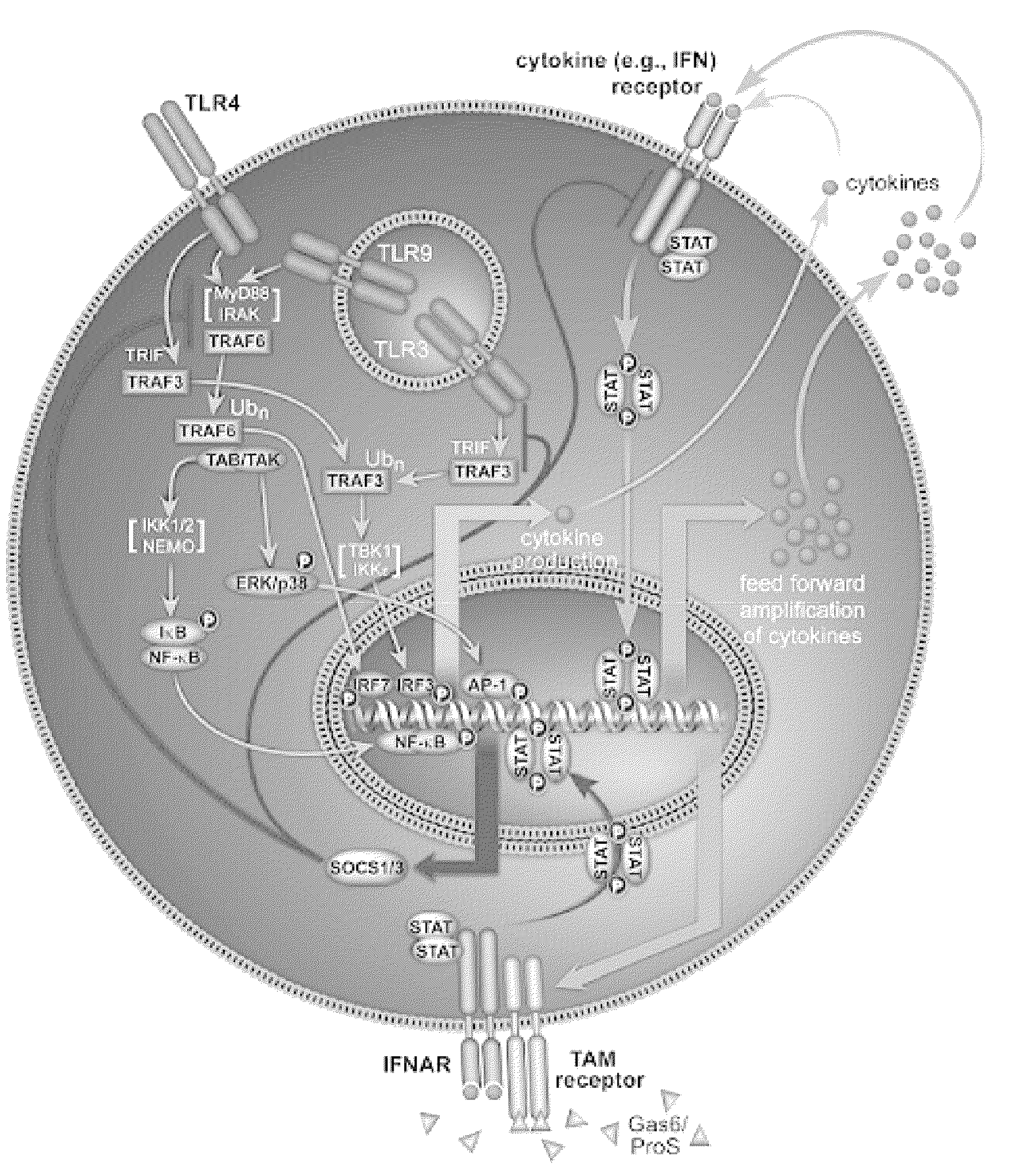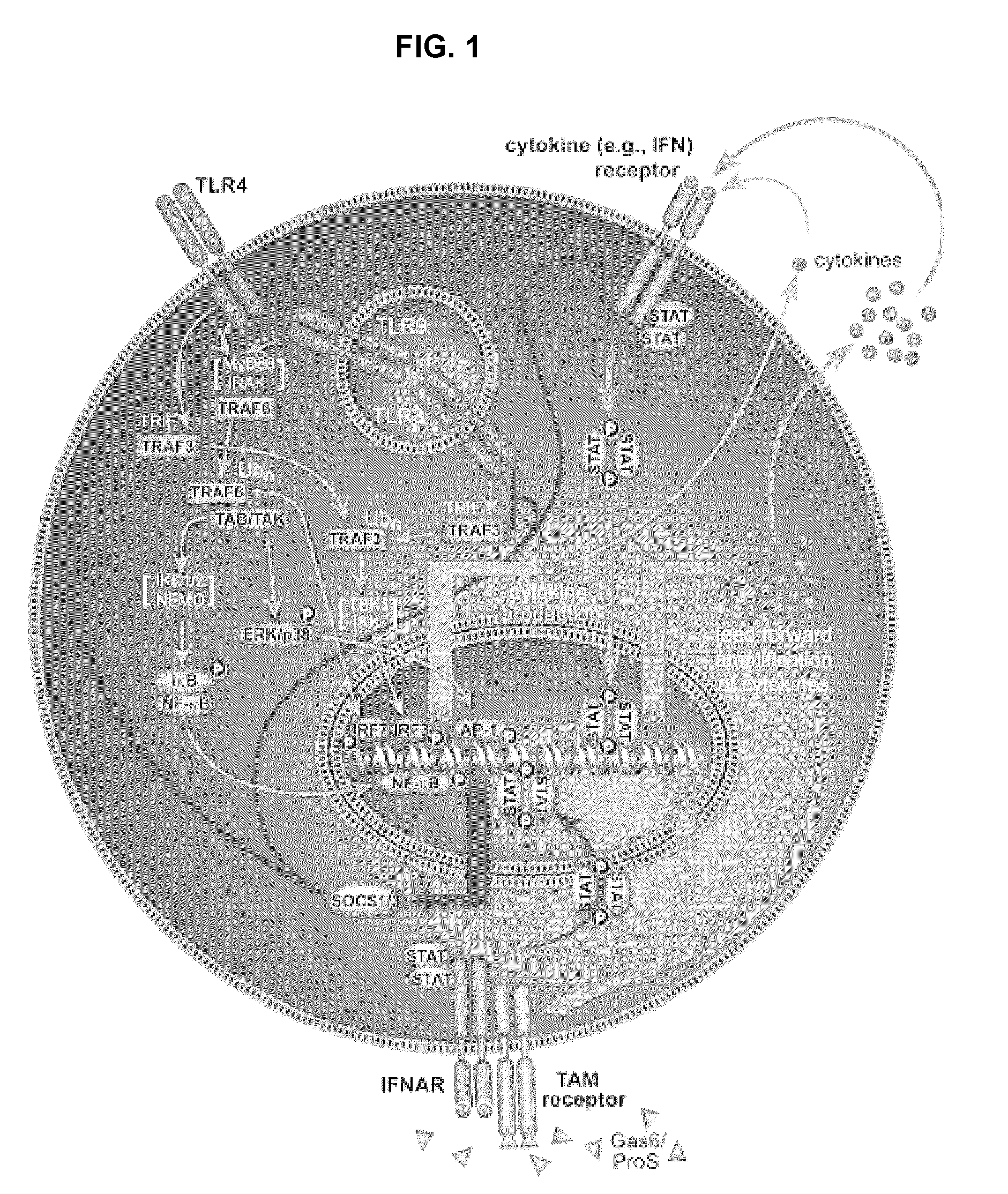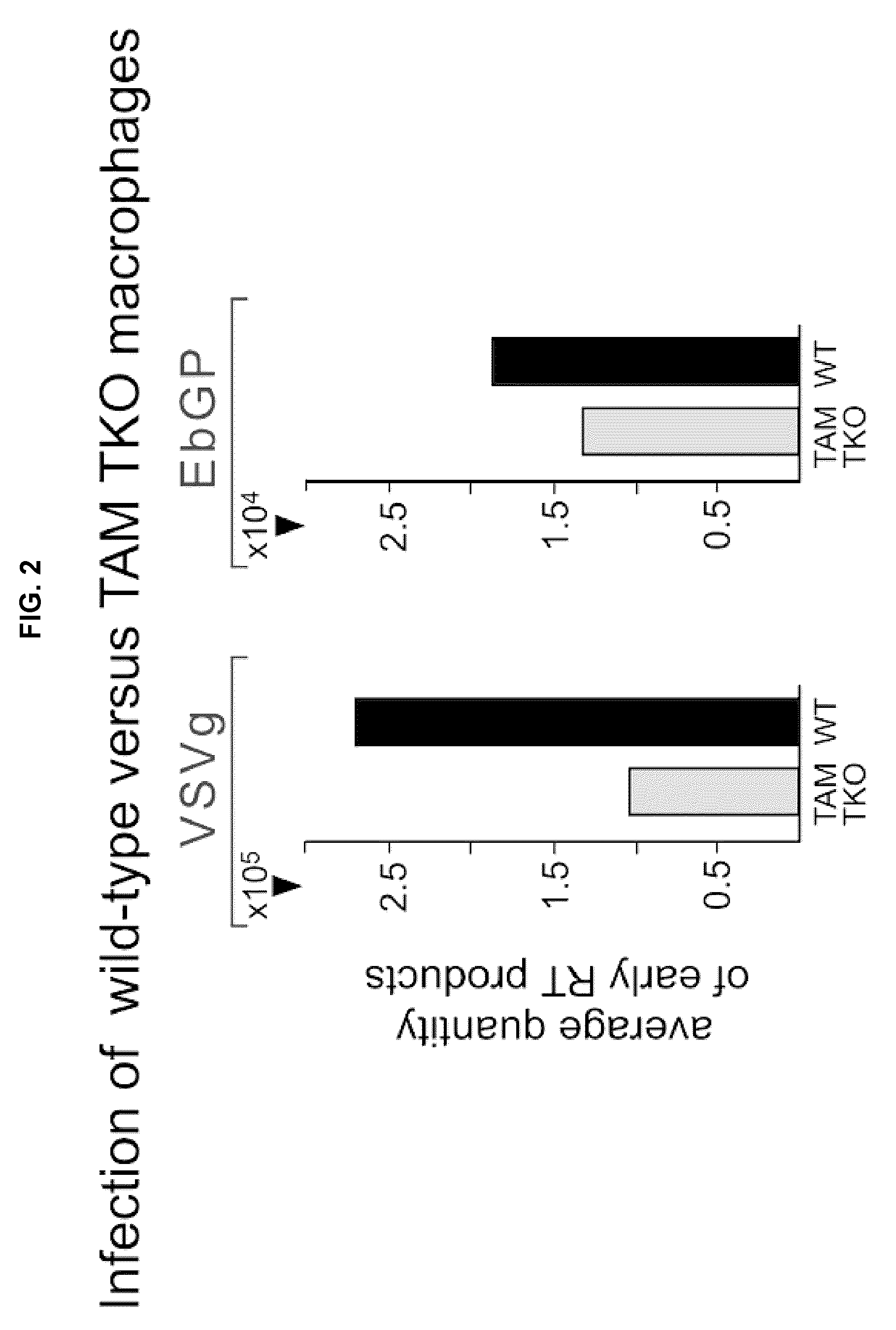Use of tam receptor inhibitors as antimicrobials
a technology of tam receptor and inhibitor, which is applied in the field of tyro3, axl, and mer (tam) receptor inhibitor for immunoenhancement, can solve the problems of major threat to public health from viral and bacterial infections, and achieve the effects of reducing infection levels, reducing the antiviral response, and increasing the viral infectivity of 293 cells
- Summary
- Abstract
- Description
- Claims
- Application Information
AI Technical Summary
Benefits of technology
Problems solved by technology
Method used
Image
Examples
example 1
Inhibition of TAM Receptor Activity Decreases Viral Infection
[0212]This example describes methods used to demonstrate that inhibition of TAM receptors make cells more resistant to HIV infection. One skilled in the art will appreciate the similar methods can be used to determine the ability of a TAM receptor inhibitor to make cells more resistant to other viral or pathogen infections (e.g., bacteria).
[0213]Macrophages from TAM receptor TKO (Tyro3− / −, Axl− / − Mer− / − mice see Lu et al., (1999) Nature 398, 723-728) or TAM receptor wild-type mice were incubated with Ebola glycoprotein (GP) or VSVg pseudotyped HIV for 24 hours. For making the pseudotyped viruses, 293T cells were seeded in 15 cm plates and transfected with a total of 50 μg (20 μg envelope+30 μg envelope minus HIV provirus) plasmids encoding either the Ebola Zaire envelope glycoprotein (pCB6-EbGP) or the VSV glycoprotein and envelope minus HIV provirus encoding the luciferase reporter gene (NL43R-E-Luc) using Polyethylenimin...
example 2
Inhibition of TAM Receptor Expression Enhances Interferon-β Production
[0217]This example describes methods used to demonstrate that inhibition of TAM receptors enhances interferon-β (IFN-β) production by the cells challenged with these viruses. One skilled in the art will appreciate that similar methods can be used to determine the ability of a TAM receptor inhibitor to enhance IFN-β production by the cells into which a pathogen (e.g., bacteria) has entered.
[0218]Macrophages from TAM receptor TKO or TAM receptor wild-type mice were incubated with VSVg pseudotyped Ebola and VSVg as described in Example 1. IFN-β production by the cells was measured by qPCR after 0 to 8 hours of viral incubation as follows. RNA was isolated with the RNeasy mini kit (QIAGEN). Reverse transcription was performed with RT Superscript III (Invitrogen). PCR reactions were performed on an ABI Prism 7700 Sequence Detection System with SYBRGreen PCR master mix (Applied Biosystems). Each reaction was normalized ...
example 3
Exemplary Pseudotyped Viruses
[0221]This example describes methods that can be used to demonstrate that inhibition of TAM receptors is a pleiotropic antiviral strategy. Although particular pseudotyped viruses are provided, one skilled in the art will recognize that others can be generated and analyzed using similar methods.
[0222]Examples 1-2 describe the use of pseudotyped viruses having an HIV core. However, other viruses can be generated using routine methods, such as replication-competent MLV and VSV viruses. Replication-competent VSV virus will be grown in BHK21 cells by a method described previously (Wilson, et al, Comparative Medicine, 2008. 58(2): 1-11; herein incorporated by reference as to the method). In the case of MLV, the plasmid encoding GFP-MLV is transfected in 293T cells using PEI as a transfection reagent and 48 h post-transfection the virus in the supernatant is collected, clarified by filtration through 0.45 um pore filter and stored at −80 C. (Sliva, et al, Virol...
PUM
| Property | Measurement | Unit |
|---|---|---|
| Cell angle | aaaaa | aaaaa |
| Antimicrobial properties | aaaaa | aaaaa |
| Chemical structure | aaaaa | aaaaa |
Abstract
Description
Claims
Application Information
 Login to View More
Login to View More - R&D Engineer
- R&D Manager
- IP Professional
- Industry Leading Data Capabilities
- Powerful AI technology
- Patent DNA Extraction
Browse by: Latest US Patents, China's latest patents, Technical Efficacy Thesaurus, Application Domain, Technology Topic, Popular Technical Reports.
© 2024 PatSnap. All rights reserved.Legal|Privacy policy|Modern Slavery Act Transparency Statement|Sitemap|About US| Contact US: help@patsnap.com










